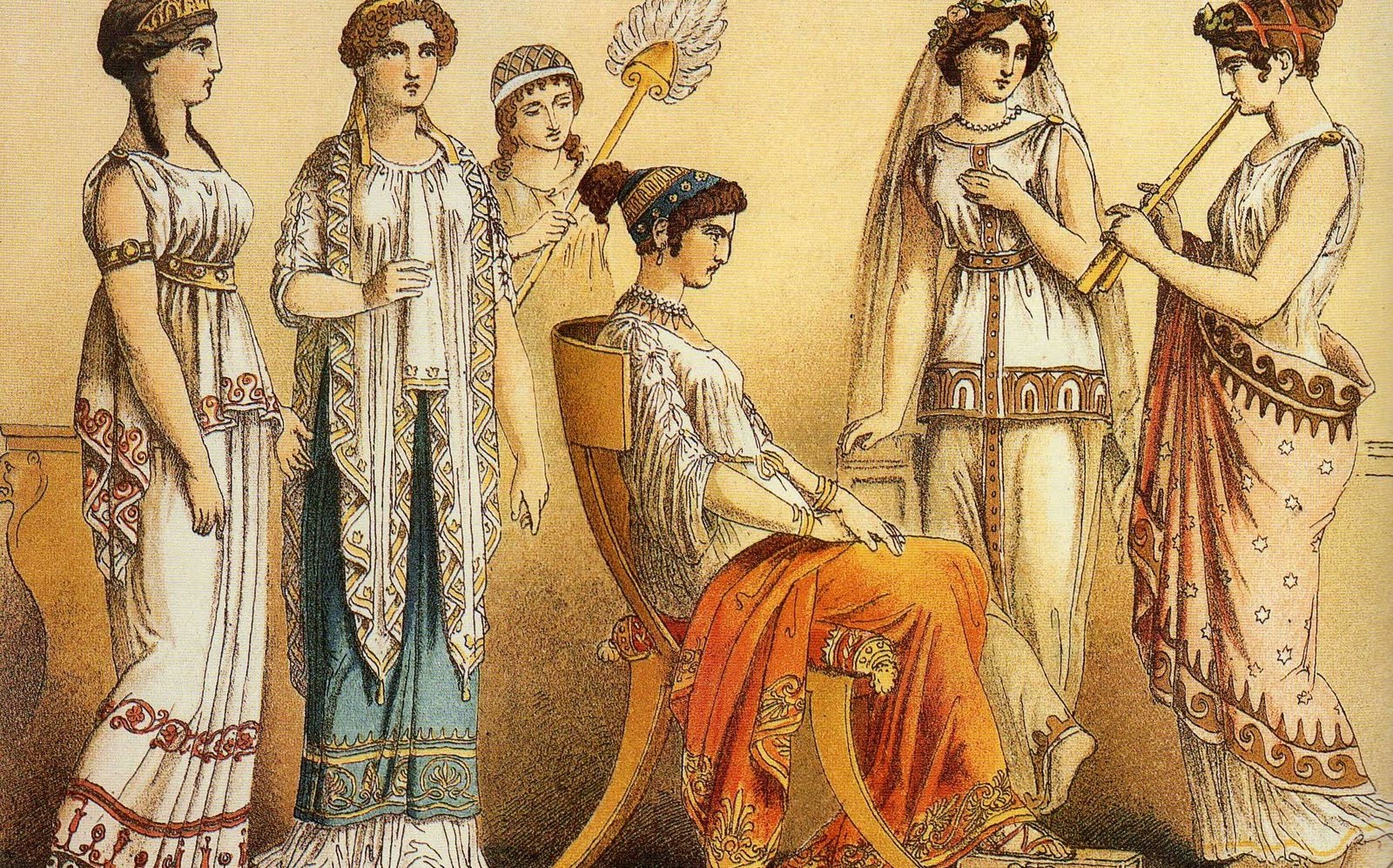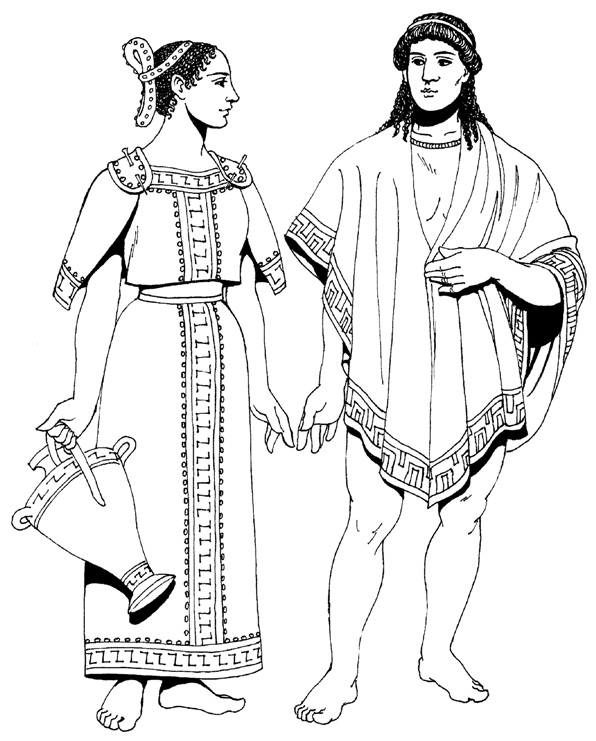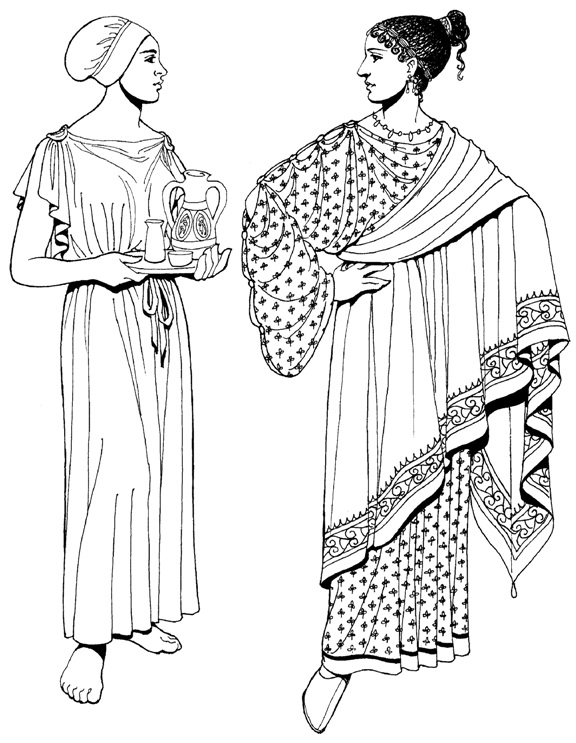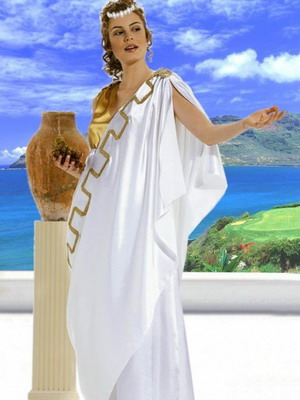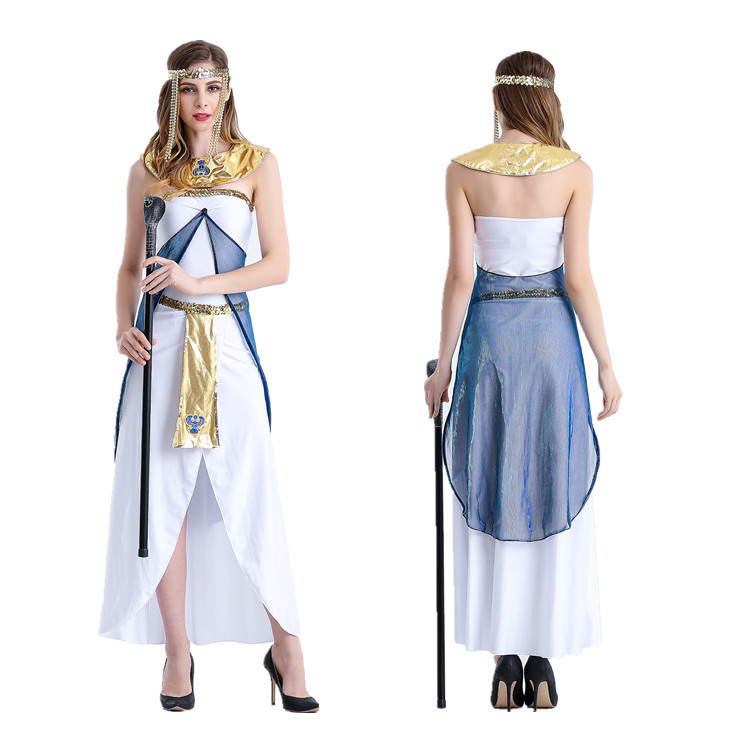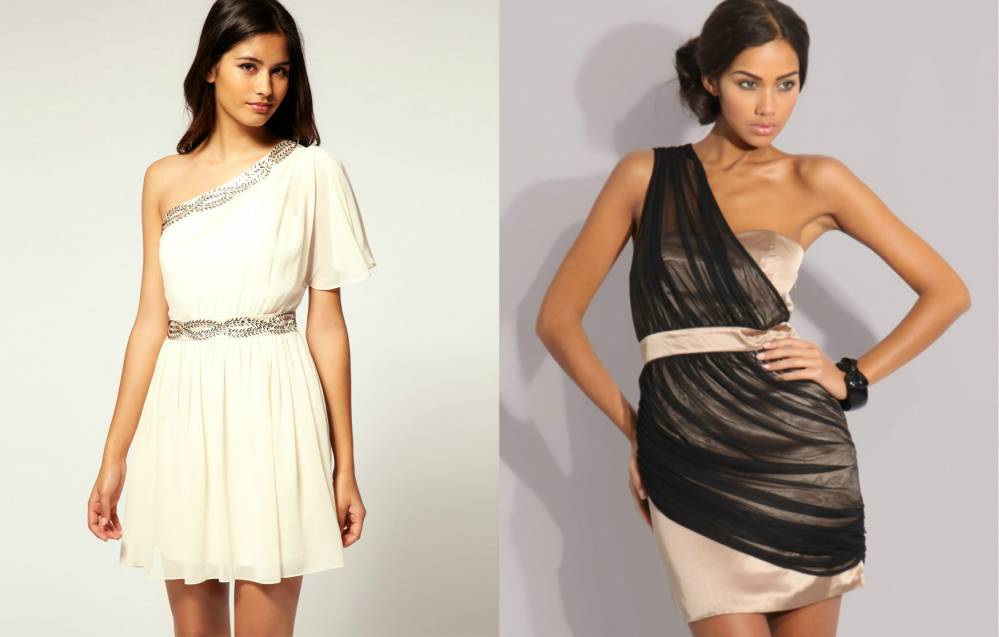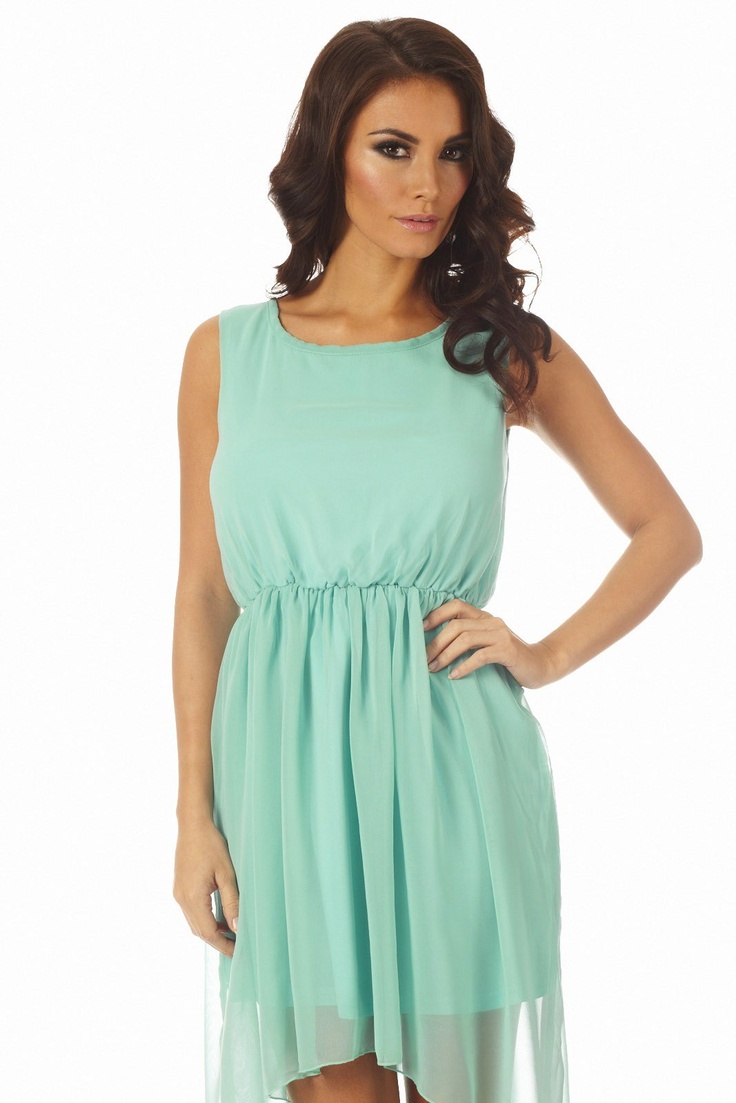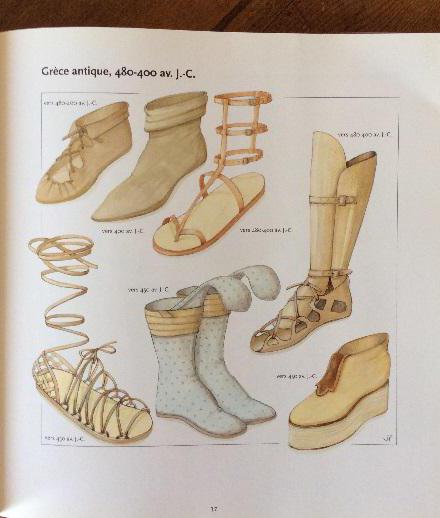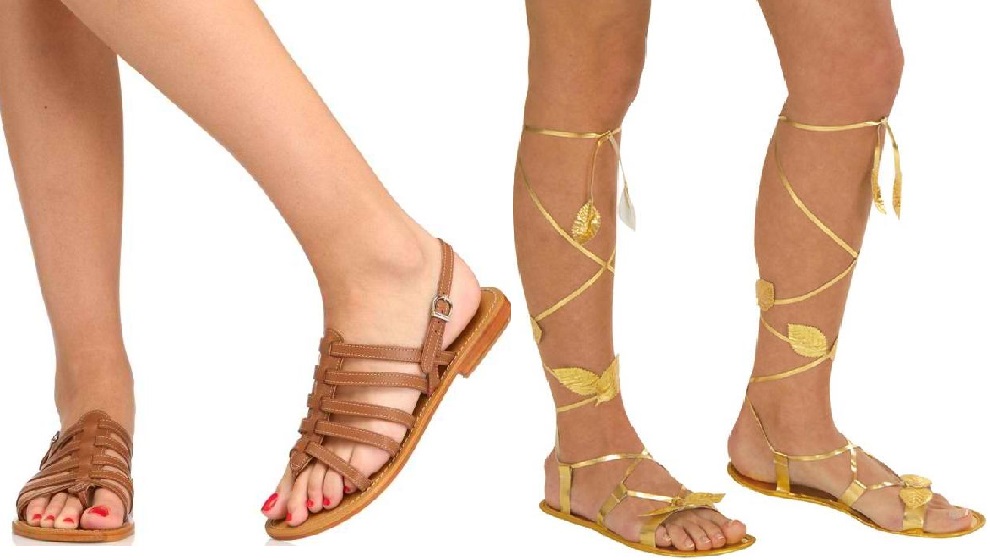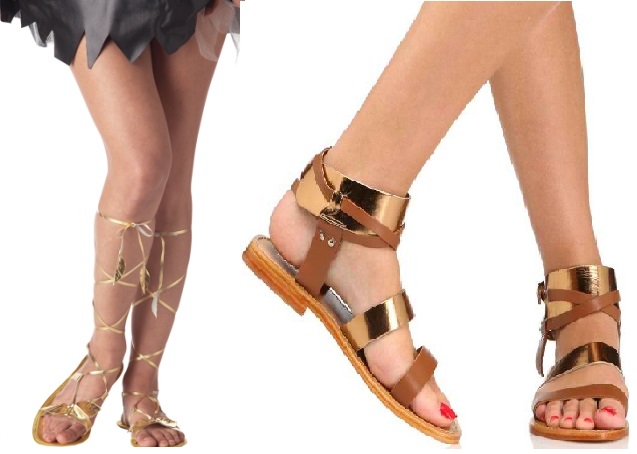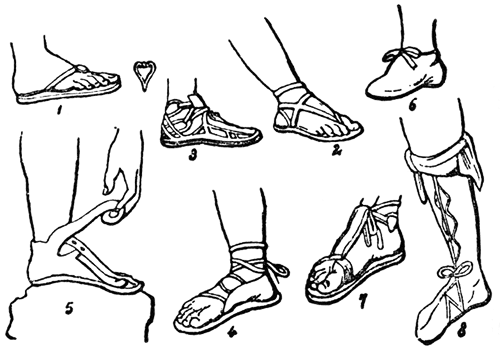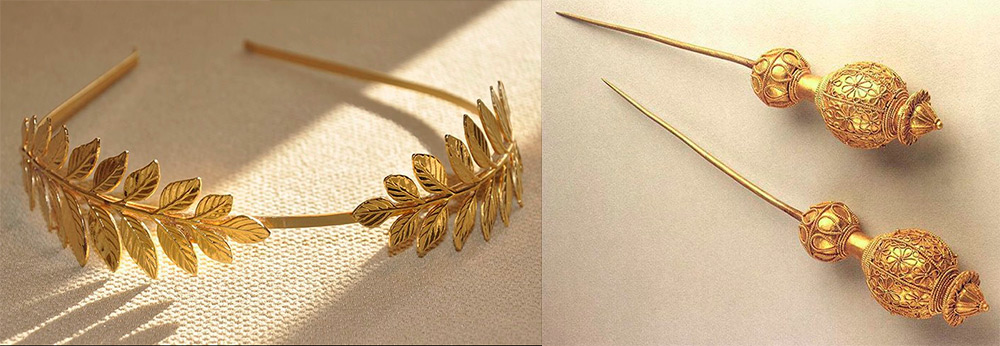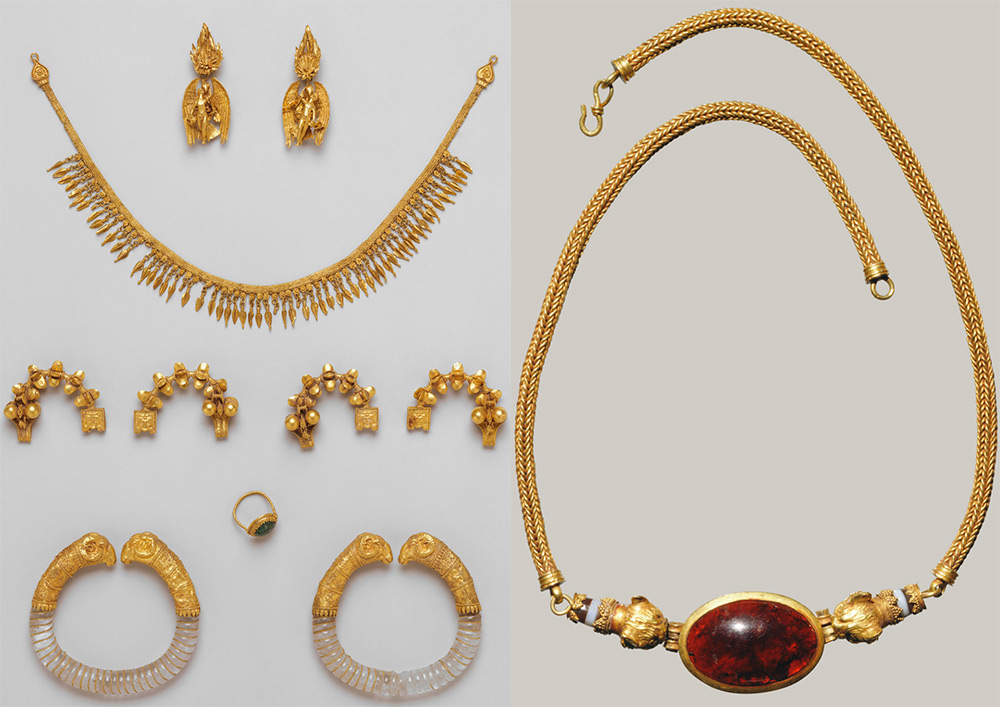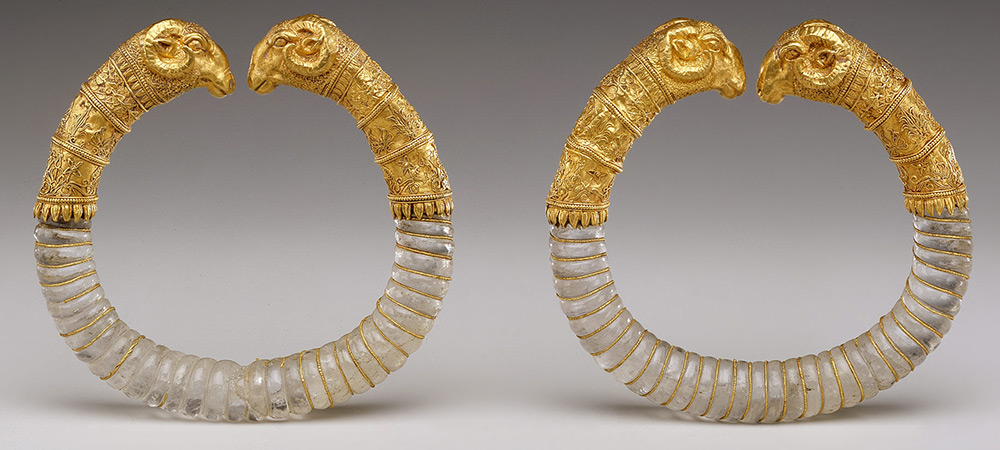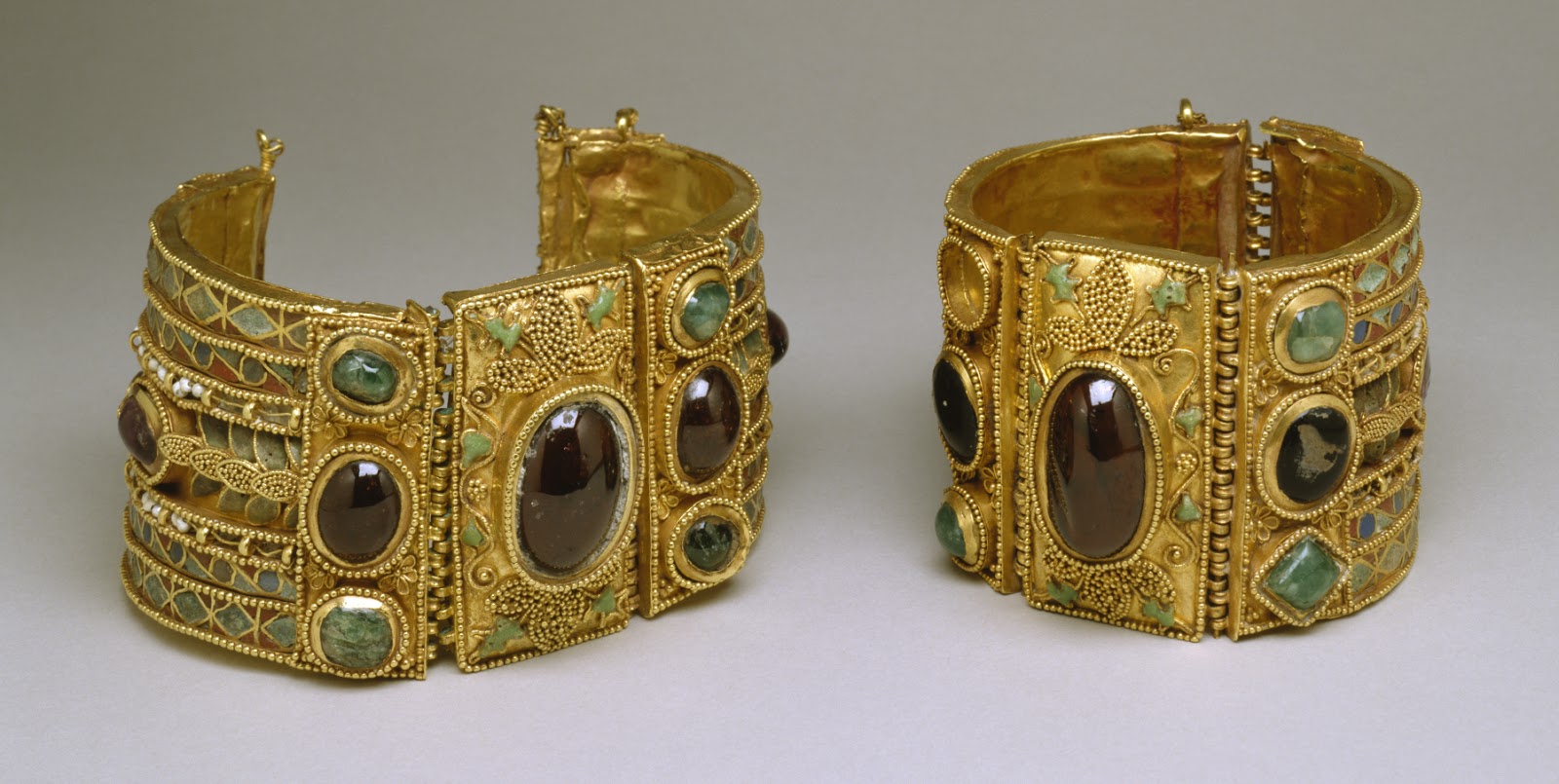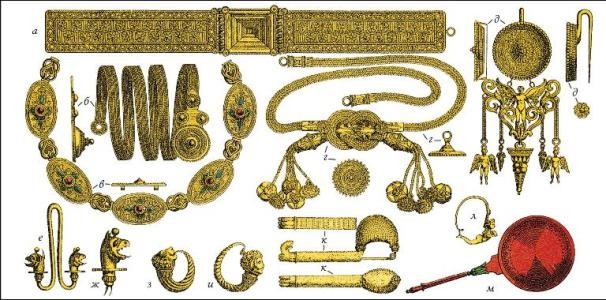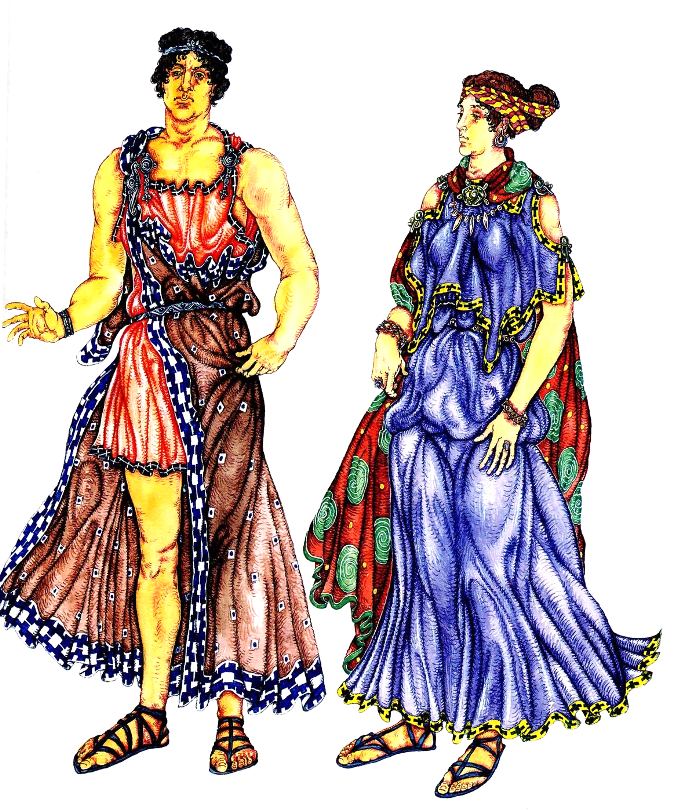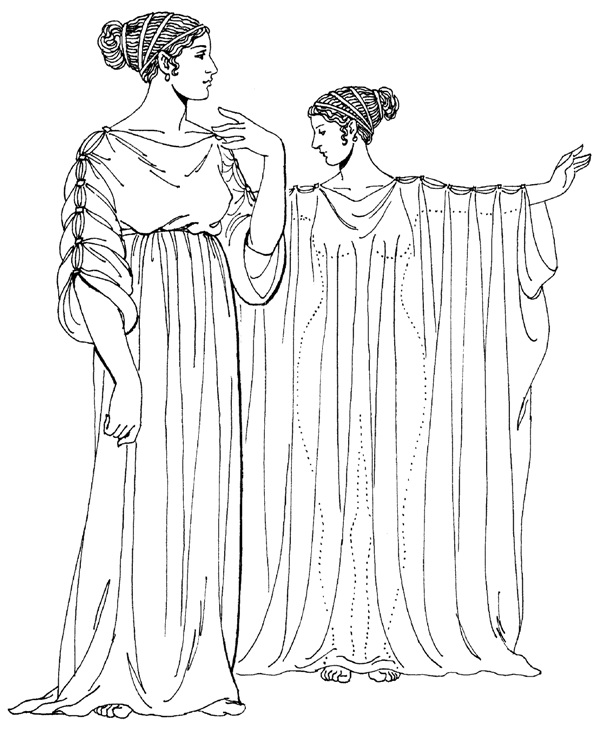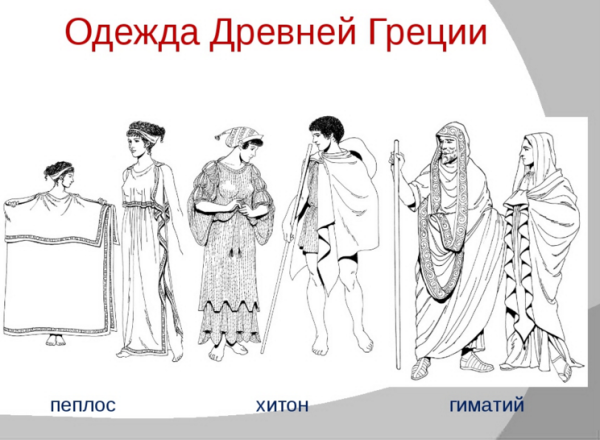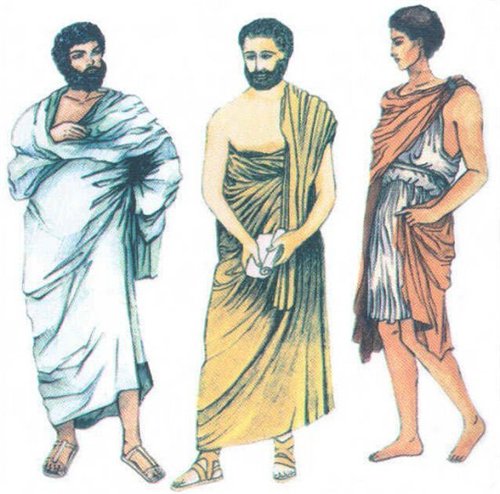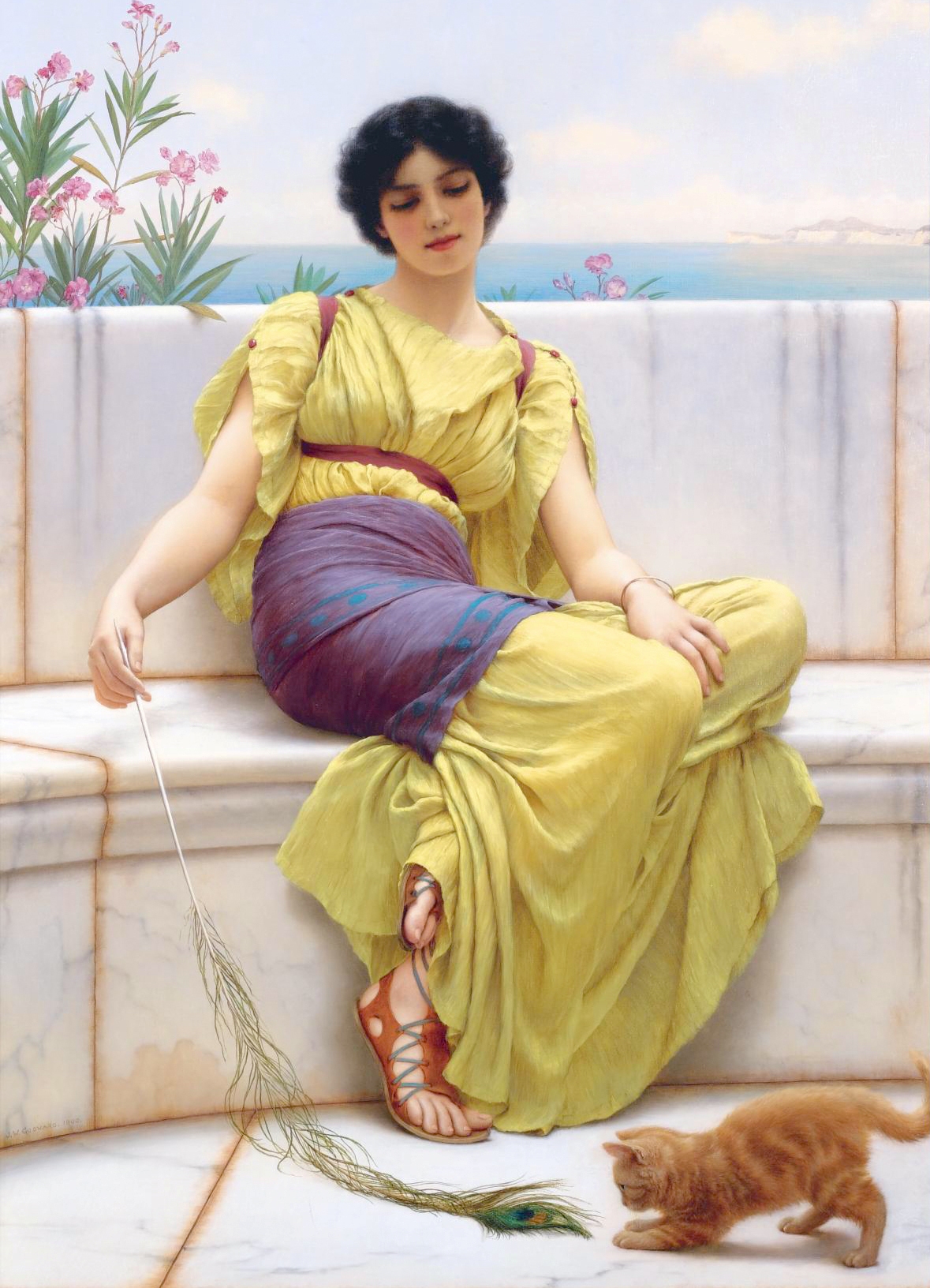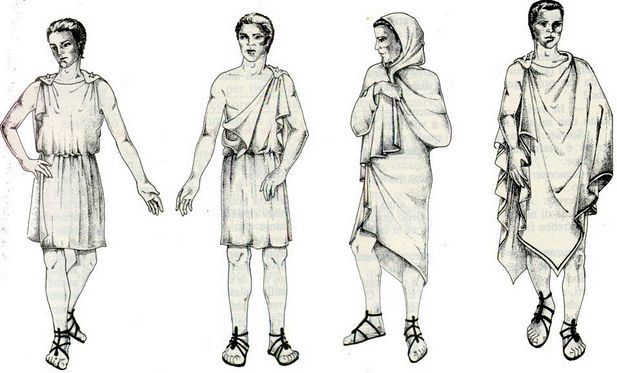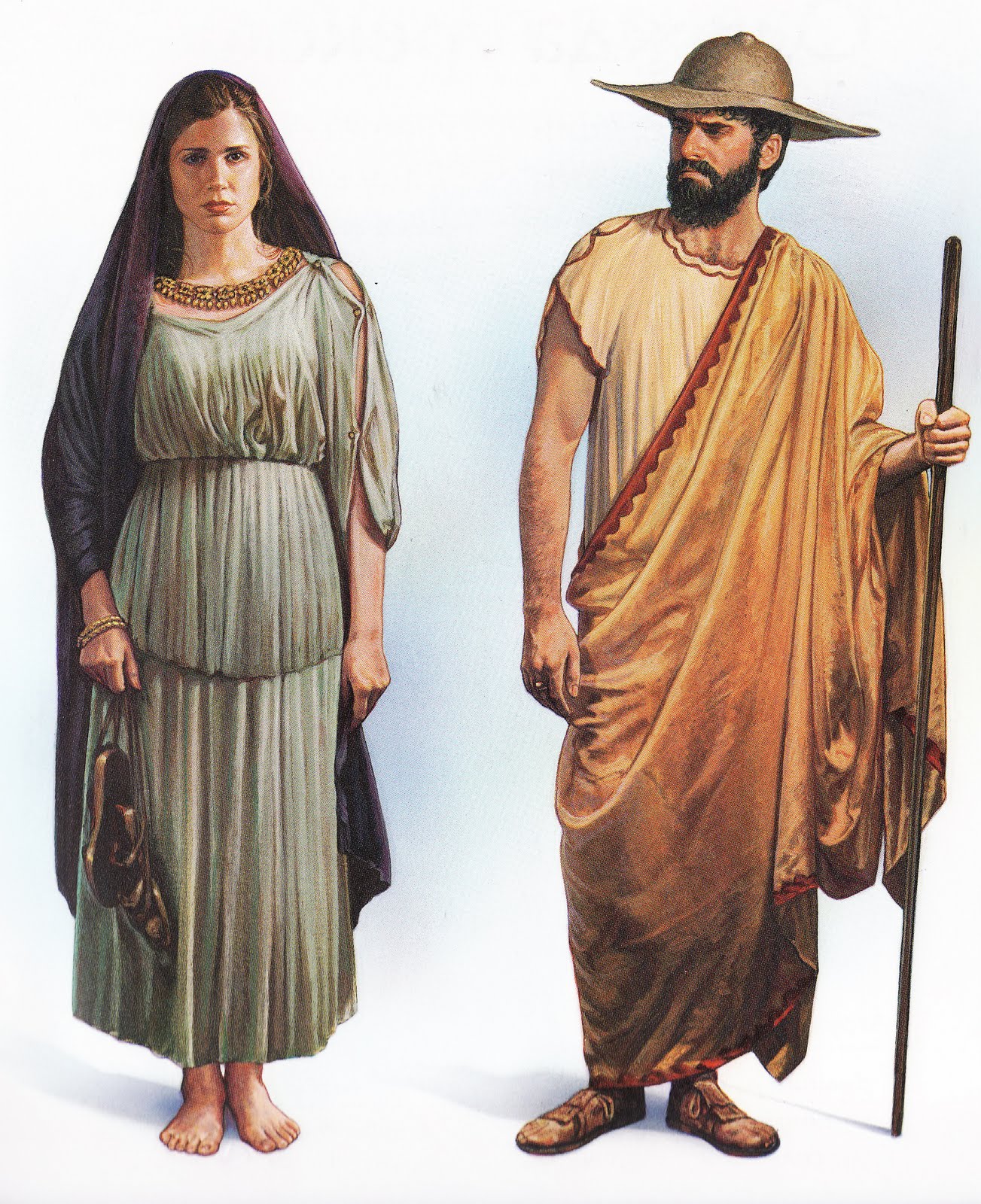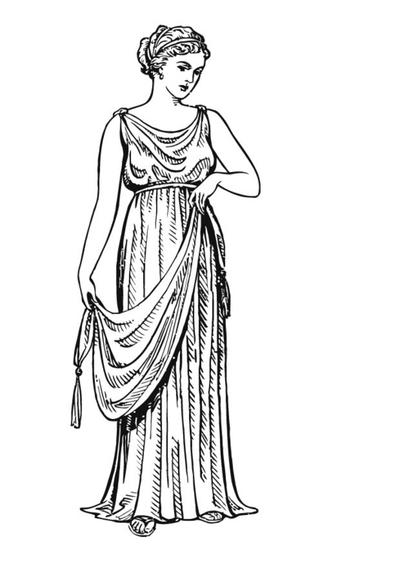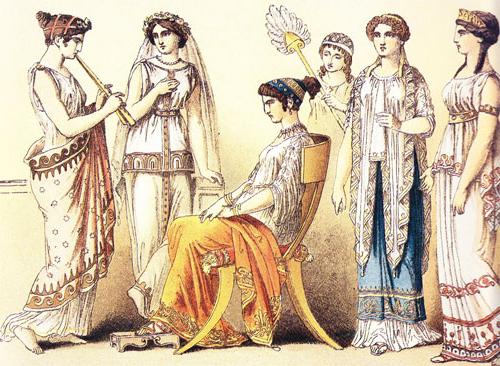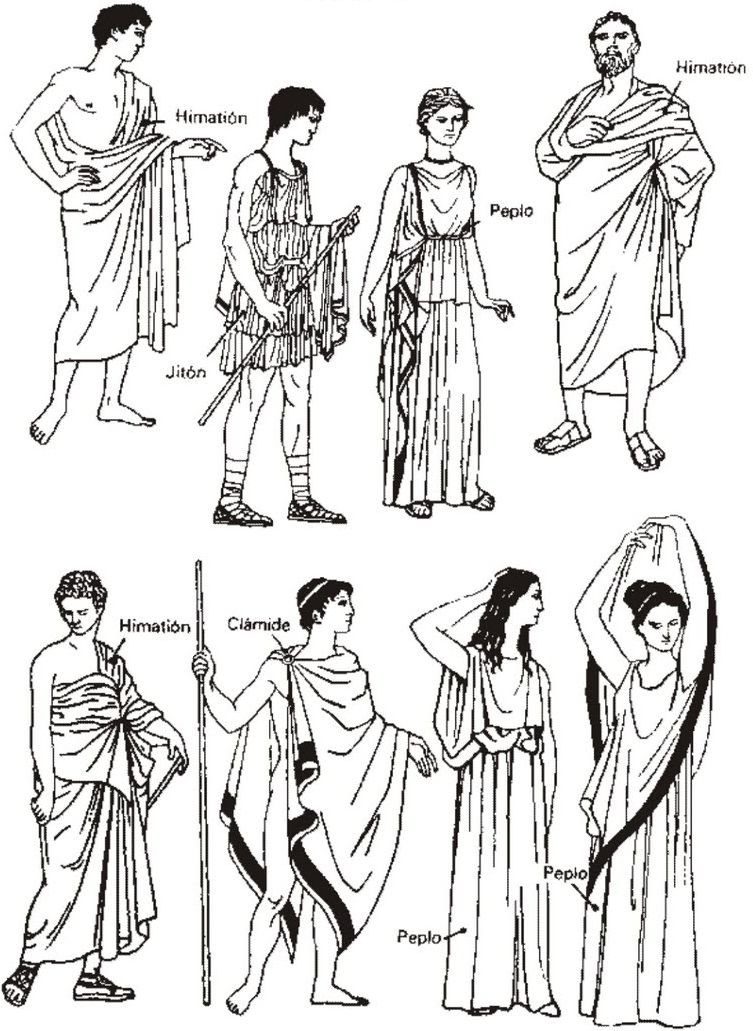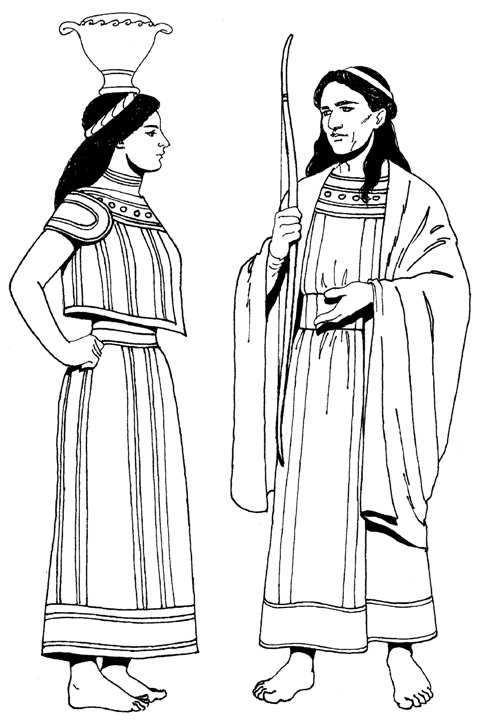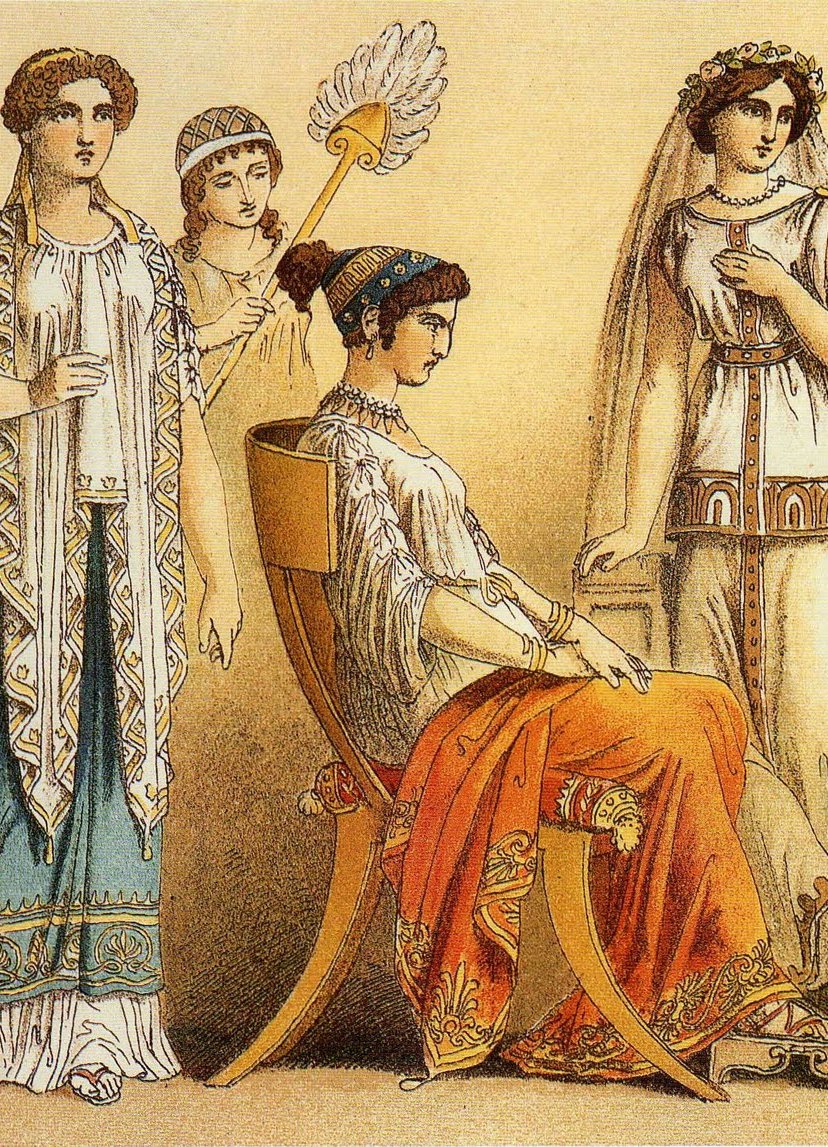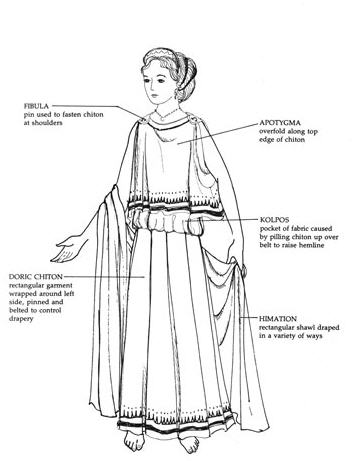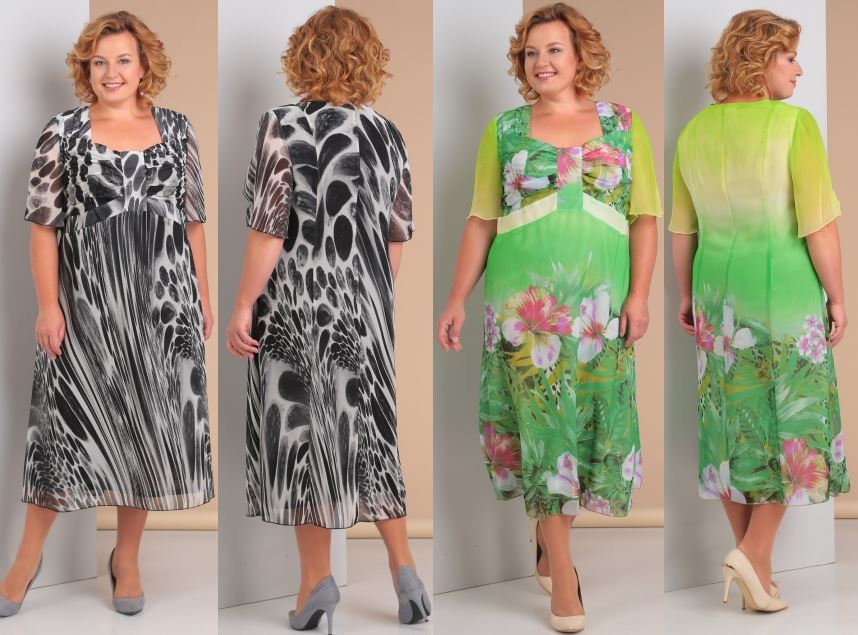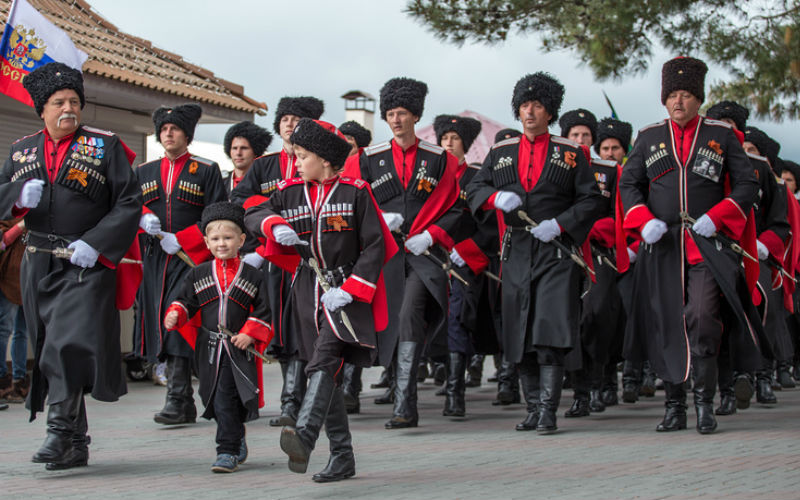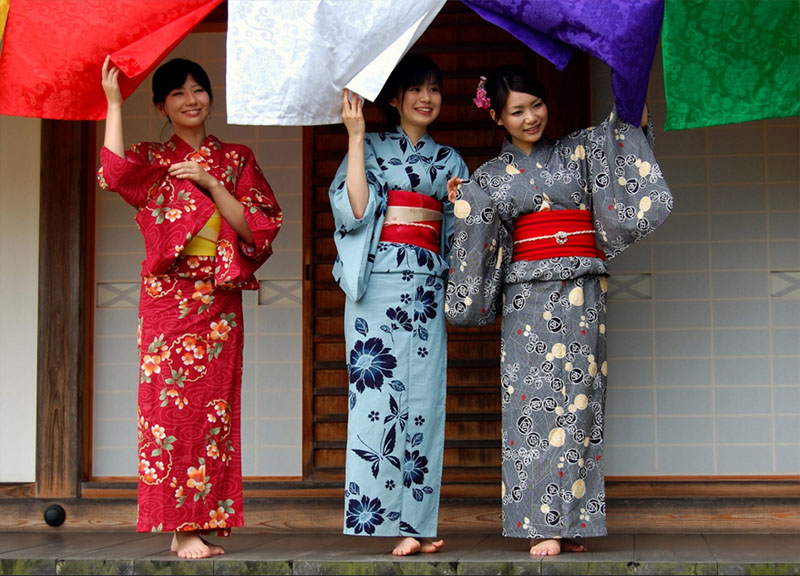Ancient Greece is the country where many modern values were born. It was here that the cult of beauty and physical exercise appeared for the first time, which contributed not only to health but also to the harmonious development of the body. The attractiveness of figures was emphasized by clothing rich in decorations and complex draperies. Weaving in ancient Greece was considered an art. Despite the fact that the clothes of the ancient Greeks were mainly created from a single piece of fabric and were not cut and often not even sewn, they amaze with the complexity of their designs and the variety of their forms.
Features and types
The ancient Greeks made clothes from wool and linen fabrics. With the development of trade with neighboring countries, silk and cotton became available. Fabrics were decorated with traditional embroidery or drawings. Most often, plant patterns were depicted:
- Palm trees (palmette pattern);
- Flowers;
- Leaves.
Drawings made of lines were widespread:
- Meander (a continuous band of right angles, still the most recognizable ornament of Greece);
- Wave;
- Beads
- Braided pattern.
The Greeks loved bright colors – red, yellow, blue, green. But the most valued color was white, because linen and wool were difficult to bleach, and only rich people could afford clothes of this color. After the appearance of purple dyes, purple also became the color of the aristocracy. Common people preferred green, brown, yellow colors. Brown, gray, dark green and black were worn in mourning.
The style and cut of Greek clothing was not very diverse. There are 4 main items of clothing in Ancient Greece:
- The chiton is the main ancient Greek garment worn by both men and women. It was an elongated tunic with no sleeves or short sleeves, belted at the waist (for men) or under the chest (for women). The chiton consisted of fabric folded in half or two panels joined together. The fabric was fastened at the top with ornamental pins - fibulae. The bottom of the chiton was hemmed. Unhemmed fabric was a sign of mourning. Short chitons were part of the men's wardrobe, and long ones were worn by women and the elderly;
- A peplos is an item of women's clothing similar to a modern long, loose dress. It was made from a large piece of woolen fabric wrapped around a chiton. Like a chiton, it was pinned at the shoulders; usually, a fold was formed at the top, hanging freely above the waist (kolpos). The left side of the peplos was closed, and the right was open; the shoulders were covered in the peplos. The peplos was an evening garment; in everyday life, Greek women wore a chiton and a cape - himation;
- A himation was a cape made of linen or wool, the ancestor of today's cloak. A large piece of fabric was wrapped around the torso, usually covering the left side and leaving the right side open. Small lead weights could be sewn into the edges to hold the fabric in place. Women often wore the himation over their heads, like a scarf;
- Chlamys is a short cape that was fastened with a fibula in the center or on the right shoulder. Most often, the chlamys was oval or rectangular with rounded edges. Usually, the cape was decorated with an ornament, and weights were sewn into the edges to ensure the correct position on the body. The chlamys was used for sports competitions, on hikes, and by travelers on their travels.
All types of clothing consisted of whole pieces of fabric of different sizes, which were draped in a special way on the body. Drapery was an art that was taught in ancient schools. Often, citizens had to resort to the help of slaves to beautifully drape the fabric.
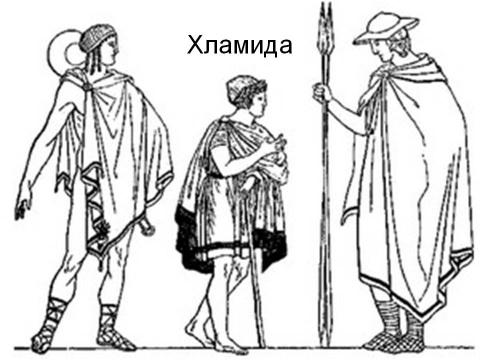
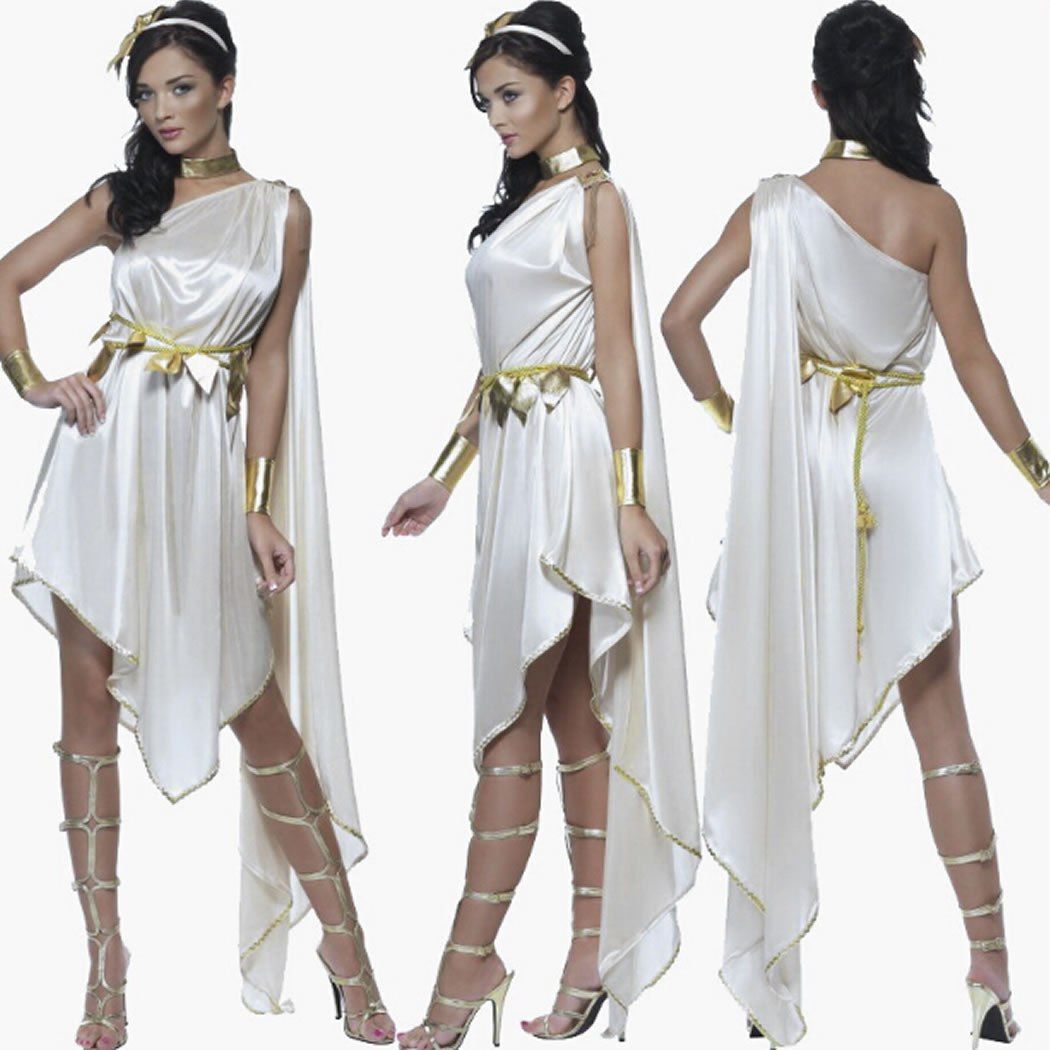
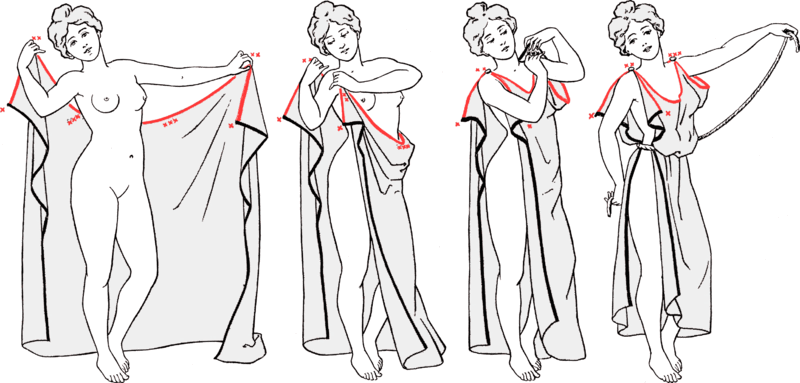
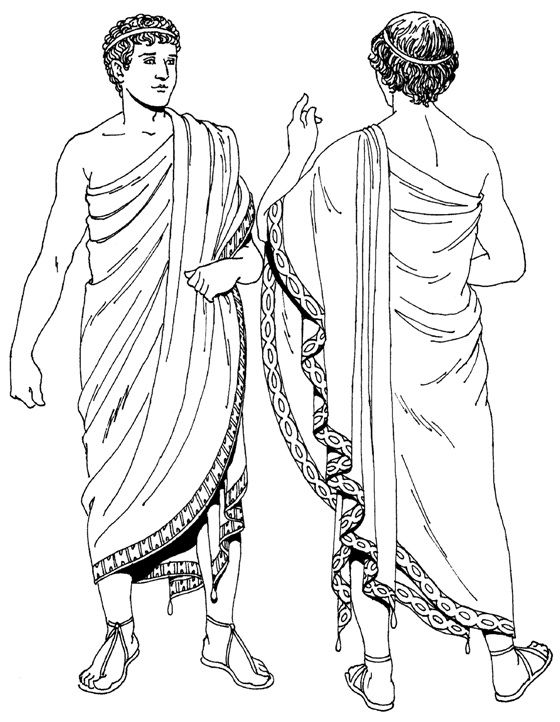
For men
Men's clothing consisted of a chiton, himation or chlamys. The undergarment was a short chiton. It was worn separately at home; for going out, a cape was additionally put on. The length of the garment depended on age - young people wore shorter chitons (usually to the knee), and older people wore long ones. Warriors and artisans, as well as slaves, wore them to the middle of the thigh. A chiton fastened with a pin on one side was also a sign of a slave.
Men wore a himation as outerwear. There were different ways to wrap themselves in it. The most common way was to drape it over the left shoulder, but it could also be worn around the hips or draped over the shoulders. Orators wrapped themselves in it completely, not even leaving their arms visible.
Young men, travelers and warriors often wore chlamys instead of himation. During travels and wars, it served both as an item of clothing and as a sleeping blanket. Ancient Greece had a special form of equipment for a warrior - a chiton, a cuirass (body protection), a helmet, greaves (plates protecting part of the leg from the knee to the ankle) and a chlamys fastened under the chin. For military leaders, it was purple. Spartans wore chlamys on their naked bodies in battle, which symbolized fearlessness in the face of death.
For women
The costumes of women and men of the Hellenes were similar, but women had to dress more modestly and covered up. Only young girls were allowed to wear short chitons. The usual form of women's clothing in Ancient Greece was a long chiton, which often had a lapel, similar to a blouse worn on top (diplodey). It could reach the waist, hips or knees. The lapel was decorated with embroidery or applique. The sides of the chiton were sewn so that it did not open when walking. The belt could be worn in two ways: before marriage on the waist, and after marriage - under the chest. Women's chitons differed from men's in the richness of draperies and ornaments.
Either a himation or (on ceremonial occasions) a peplos was worn on top. The female himation was smaller than the male one, but it was more beautiful and richly decorated. In inclement weather, Greek women wore it as a headdress. Only free citizens could cover themselves with a himation. Slave women wore short chitons.
The peplos was the national ceremonial dress of Ancient Greece. It was usually colorful - motley, bright yellow, red or purple. Often the garment was decorated with embroidery. If desired, Greek women could take it off and use it as a seat cover. Pictures of Greek women of that time often depict noble girls wearing peplos during ceremonial processions.
| Type of clothing | Women | Men |
| Lower | Chiton (short - for young women and slaves, long - for adult women). | Tunic (up to mid-knee - for ordinary citizens, short - for warriors, artisans and slaves, long - for the elderly). |
| Upper | Peplos/himation. | Himation is for everyday life, chlamys is for warriors and travelers. |
Modern analogues in Greek style
Designers often pay attention to antiquity when creating new collections. The main elements of the Greek style in clothing are considered to be:
- Drapery, layering;
- Asymmetry (open shoulder, asymmetrical hem);
- Straight, loose silhouette;
- Natural fabrics (linen, cotton, chiffon, silk);
- High waistline.
The antique clothing of Ancient Greece is the ancestor of many items of modern wardrobe. The most famous version of the chiton and peplos for women is a dress or sarafan, most often with a waist under the bust, following the example of married ladies of antiquity. The shoulders are usually left open: the fabric is either fastened like a chiton on both shoulders, or one shoulder is completely open, forming the so-called "Greek strap". A Greek-style dress can be short, but long models decorated with drapery or pleating are more common.
Another item of clothing in the Greek style is a tunic. It can be either summer, light, or insulated. Greek tunics are distinguished by a high waist, a loose cut, a V-neck or a boat neckline. A belt in the form of a cord or strap is often used. Since the tunic is usually shortened, it is worn as a blouse, and not as a separate item of clothing. Tunics can also be worn by men; for them, it will look more like a loose shirt or T-shirt made of natural materials.
Himation and chlamys remained part of the folk costume of Greece. They are not worn in everyday life, but they are used as costumes for holidays.
Shoes
The art of shoemaking was developed in Ancient Greece. The simplest footwear, which appeared in Hellas, was sandals with leather or cork soles, which were attached to the foot with straps laced up to the ankle. Shoes for peasants and artisans were made of leather. Warriors wore high-topped boots made of leather. For sports competitions or physical exercises, special shoes with open toes, called endromides, were made of leather or felt. Spartan boys went barefoot even in winter to cultivate a fighting spirit.
Women wore leather sandals, often with high heels or cork platforms to add height. Shoes with high platforms were called buskins and were widely used in the theater as part of stage costume. In the cold season, Greek women wore boots and shoes made of soft colored leather, which were decorated with embroidery, appliques, and precious stones.
Greek-style shoes are still very popular. To choose the right model, you should pay attention to sandals with a flat sole and a large number of straps made of soft leather in neutral tones. These sandals go well with loose tunics and dresses in an antique style.
Accessories and jewelry
Of the headdresses of the ancient Greeks, the most famous were felt hats:
- Petas is a wide-brimmed headdress worn by travelers;
- Pylos is a brimless cap worn by peasants and workers.
Hats were a man's accessory; women could wear a hat only when going on a journey. Women paid great attention to decorating their hair. The main female hairstyle was a knot on the neck made of braided plaits or plaits. Combs, hairpins, ribbons, and wreaths were used to secure the braided plaits and knots. Hair was decorated with gilded leather straps or cords, and also decorated with hoops made of gold, silver, bronze, or leather.
Men used rings, bracelets and amulets made of precious stones as jewelry. The amount of jewelry a man could afford was fixed by law.
Women wore tiaras (forehead and back of the head), chains, earrings, necklaces made of gold, silver and alloys with pearl inserts. Greek women especially loved bracelets - they were worn on the wrist, forearm and even on the ankles. Plant patterns - leaves, buds, flowers - predominated in the decoration of jewelry.
Thanks to ancient literature, sculpture and frescoes from antiquity, Greek clothing has survived to this day and even influences modern fashion. Stylizations of chitons, peplos, himations and chlamydes, as well as ancient Greek footwear and jewelry can be found in many 21st century designers. The popularity of the Greek style in clothing is explained by its simplicity and complementarity for any type of figure.
Video
Photo

